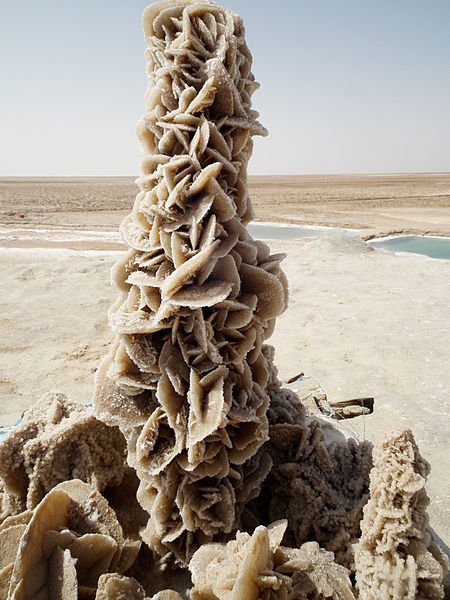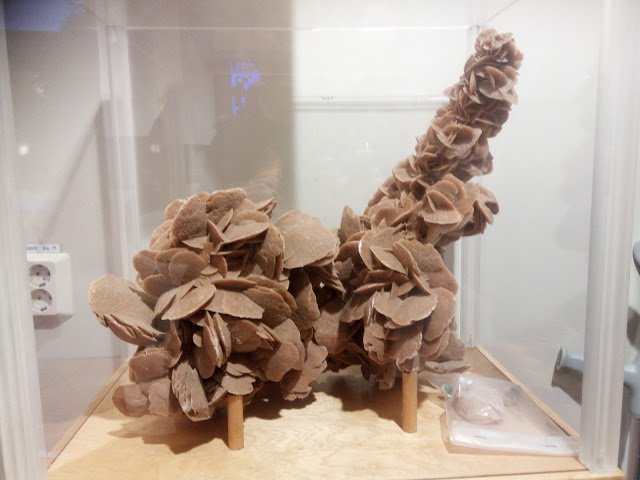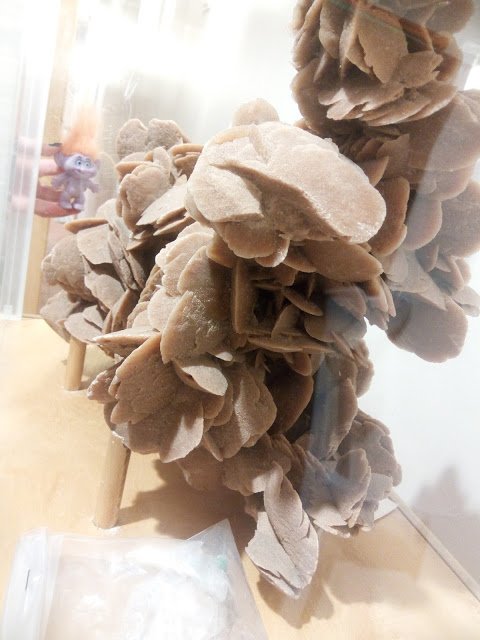Welcome to my blog again! After wandering in the streets of cold Uppsala I thought about taking you on a trip to the hot desert to show you something really amazing...

(Image source: pixabay.com)
A desert rose! Those beautiful formations can turn the mundane fields of sand into a gorgeous, "blooming", sandy garden (an underground garden)!
Who plants them?
Mother nature!
How?
By combining: a desert, brine, calcium sulfate (CaSO4) and evaporation. The process is simple, in an arid desert area briny water sneaks underground. There it concentrates the calcium sulfate and crystallizes it into the mineral gypsum/selenite (CaSO4, 2H2O). Over time, the water gradually evaporates and deposits. Gypsum crystals start forming within the free space in the pores that loose sand creates and the final result is these beautiful rose-like evaporites, crystals that have incorporated sand grains over their body. New crystals are created over the older ones and our flower slowly blooms, burried under the sandy soil. Baryte can also form rose rocks, only their "petals" may be a little different (gypsum/selenite flowers have well-defined, sharper edges).

There are two scenarios considering their formation. The first one supports that the nucleation sites are already placed in the sand, the crystals start forming on them and then, as they keep growing, they meet one another and join like the pieces of a 3D puzzle (like this one I got as a present) . This hypothesis though cannot explain why the sizes of rose rocks we find vary so much. The other scenario is that the bases where the nucleation happens on diffuse, meaning that the new discs aggregate through a process that is controlled and limited by this diffusion.
In shallow depths, rose rocks are usually amber-colored spheres of intergrown crystals with sharp petals. If we go deeper, the crystals are yellow or colorless, larger and thicker and so are their protruding blades. We may find clay or even rocks in some big blades. Rose rocks' crystals are fluorescent and phosphorescent, under ultraviolet light they emit a pale, white light.
Rose rocks can form rather quickly (in geological terms), as they can take from decades to centuries. Almost half of their weight is gypsum (50-70%). Analysis of the gypsum crystals has shown traces of silica sand (higher concentrations found in the core imply that the petals start growing from silicon seeds). Their average size ranges from 1-10 ccentimeters, although the Oklahoma Geological Survey has recorded one with dimensions of 43 cm across and 25 cm high (and a weight of 57 kg). They can be found in different places all over the world (the USA, Mexico, Australia and Africa are just some of them) and depending on the area we find them, they can be quite different in shape, but one thing is for sure, that once they get dug out, erosion quicklly starts destroying them.
This one is from Tunisia:

(Image source - author, Laura Peña - license)
And this one here...


...is from my visit to the University of Uppsala, department of Geology.

Let's finish this post with a song I love so much! Enjoy!
References
en.wikipedia.org
legacy.earlham.edu
frontiersin.org
*All non-credited images by @ruth-girl

Thank you for stopping by and giving this post a read. I hope you enjoyed it! If it got your curiosity-radar on, you can read some of the previous articles on this series:
26 - Psychedelic Swamp
27 - Supercell Storms
28 - Northern Lights
29 - Light Pillars
30 - Fairy Circles
You can also check out my short stories, educational posts or pranks using science.
Special thanks and mentions go to:

Until my next post,
Steem on and keep smiling, people!


